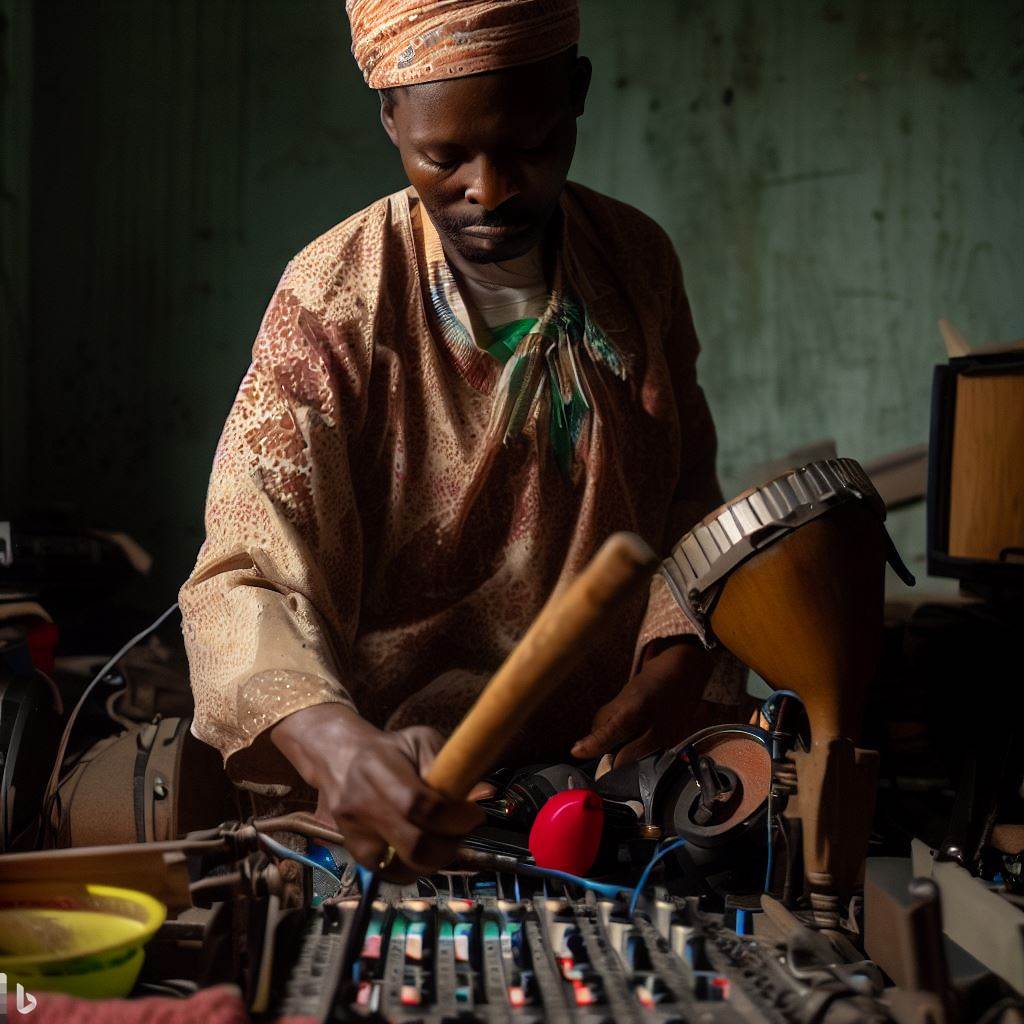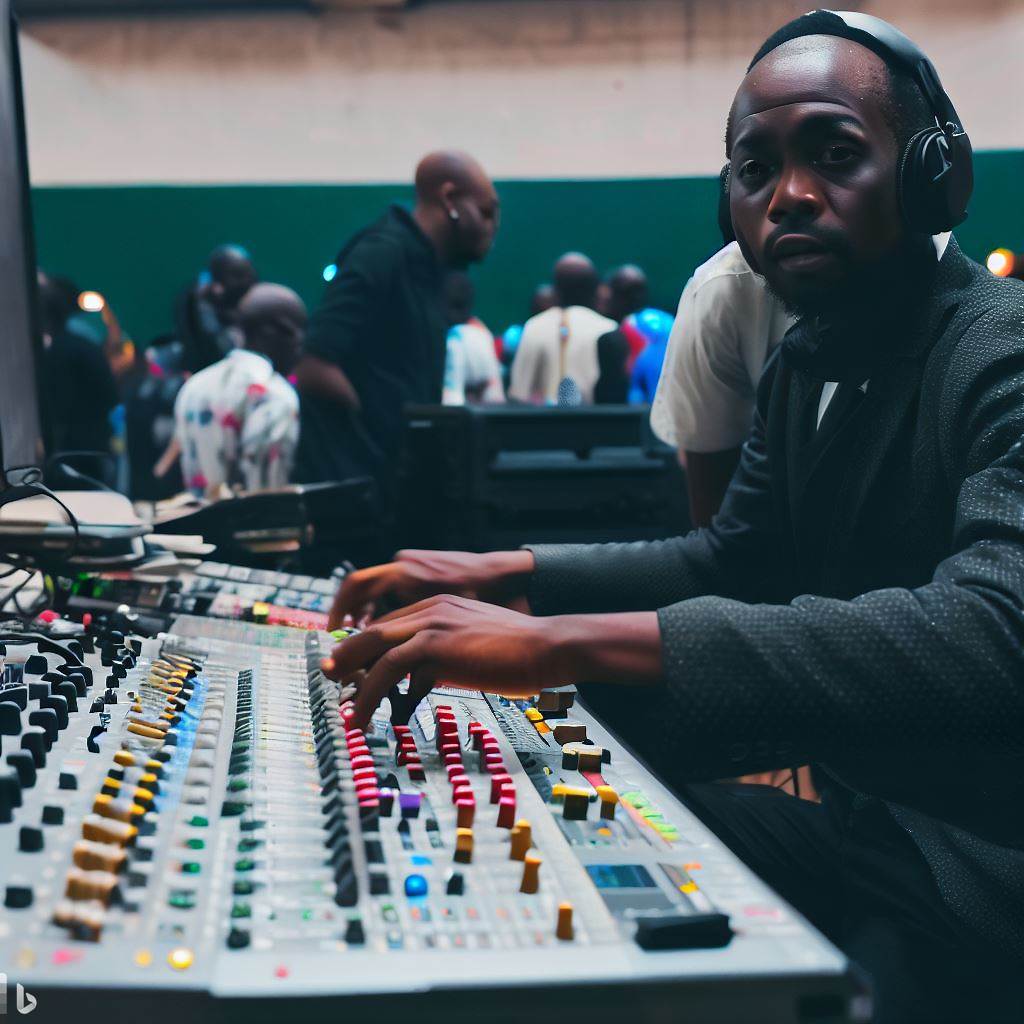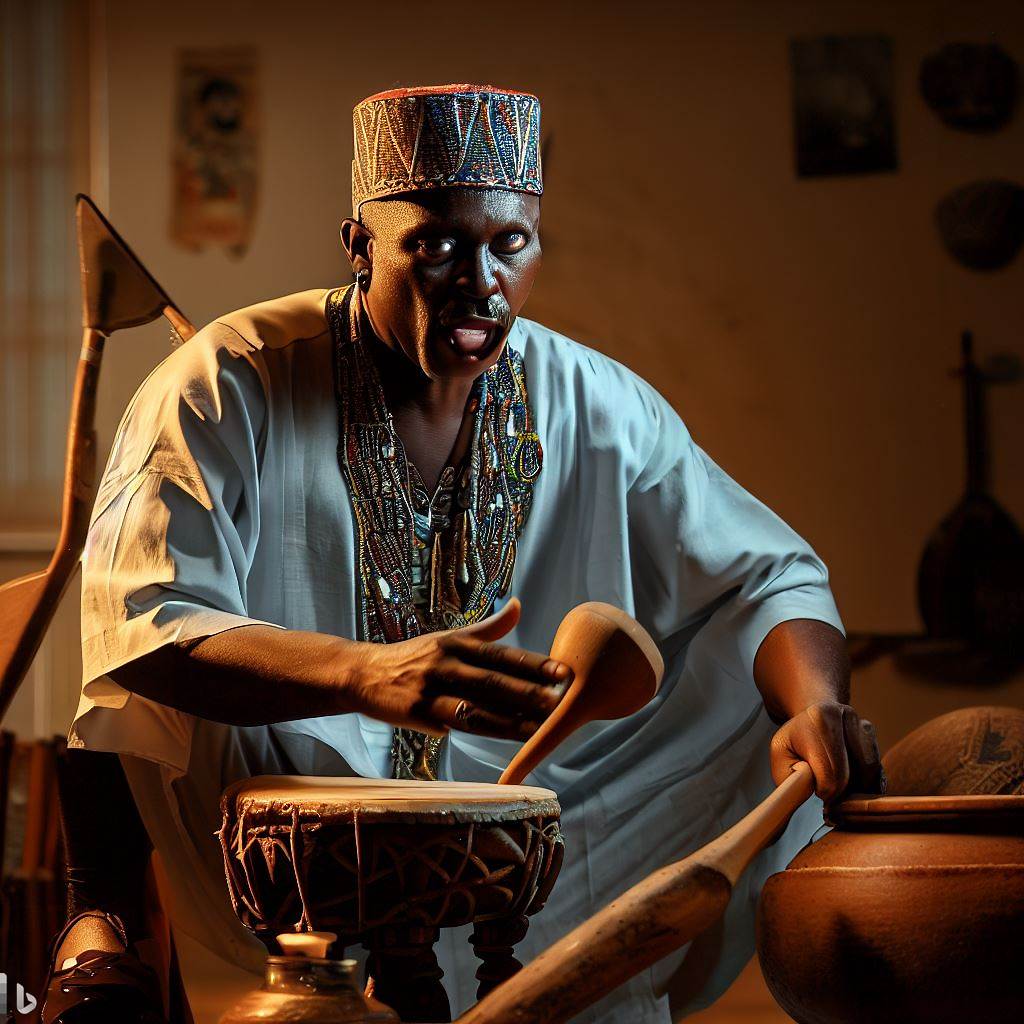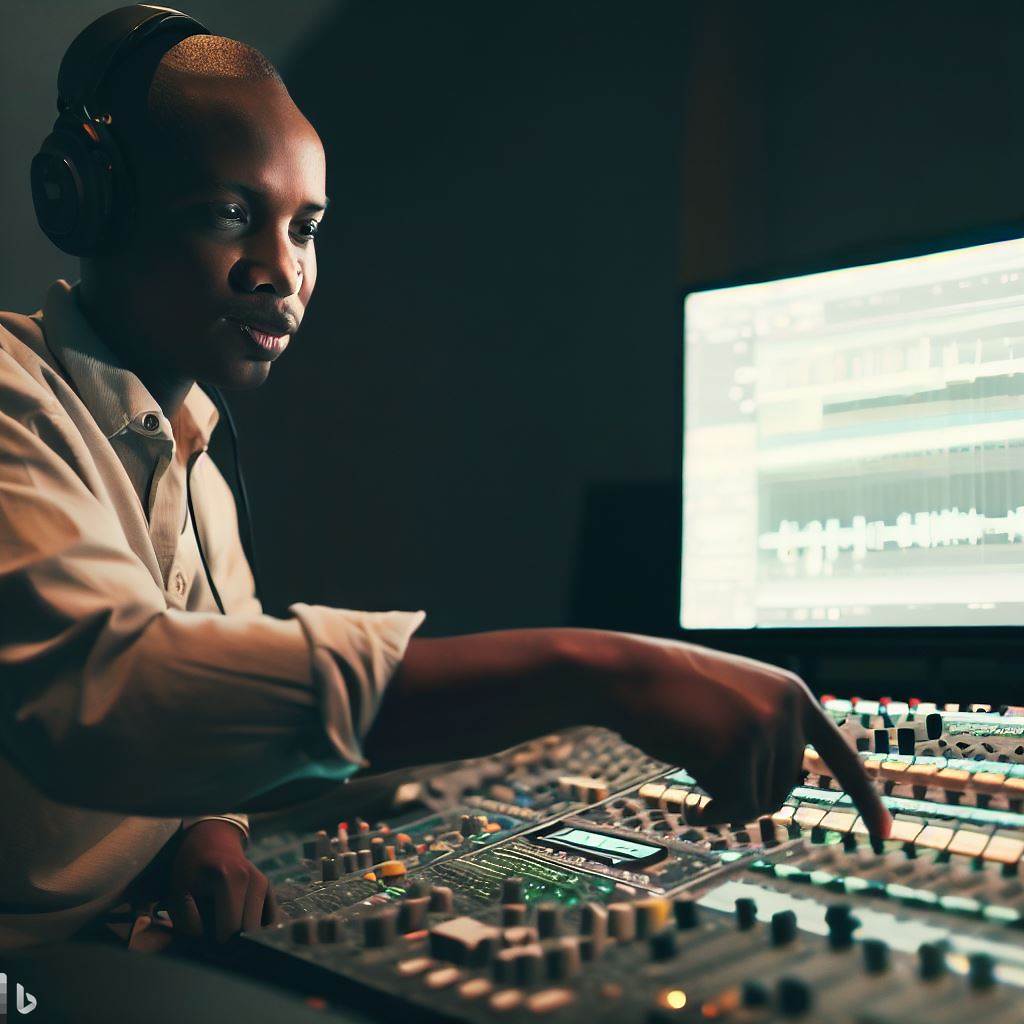Introduction
Animation directors play a crucial role in the creation of animated films and series.
They are responsible for overseeing the entire animation process, from concept development to the final production.
Their expertise ensures that the vision of the project is brought to life on screen.
Without animation directors, the seamless storytelling and captivating visuals that animated films and series are known for would be impossible to achieve.
The Importance of Animation Directors
Animation directors bring a unique set of skills and knowledge to the table.
They have a deep understanding of storytelling and visual aesthetics, allowing them to craft compelling narratives that resonate with audiences of all ages.
They work closely with the writers, artists, animators, and other members of the production team to create a cohesive and visually stunning final product.
One of the core responsibilities of animation directors is to provide guidance and direction to the team.
They ensure that the animation style, character designs, and overall aesthetic align with the vision of the project.
By overseeing the storyboarding process, they make sure that every scene and shot flows seamlessly, maintaining a consistent tone throughout.
In addition to their creative expertise, animation directors also possess strong leadership and communication skills.
They must effectively communicate their vision to the team and provide clear feedback and guidance.
Their ability to collaborate and inspire a diverse group of artists and animators is what drives the success of the project.
In the end, animation directors are the driving force behind the creation of animated films and series.
Through their creative vision, leadership, and expertise, they bring stories to life on the screen, captivating audiences and leaving a lasting impact.
It is their unique combination of artistic talent and organizational skills that make them indispensable in the world of animation.
What is an Animation Director?
An Animation Director is a key figure in the production of animated films and TV shows.
Their main responsibility is to oversee the entire animation process, from concept to completion.
Here, we will delve into the role of an Animation Director, discussing their main responsibilities, tasks, and their crucial role in the overall production process.
Responsibilities and Tasks of an Animation Director
- Visualizing and Conceptualizing: The Animation Director works closely with the creative team to visualize and conceptualize the animation project.
They contribute ideas and suggestions to enhance the overall look and feel of the animation. - Script Analysis: The Animation Director analyzes the script and develops a thorough understanding of the story, characters, and desired emotions.
They ensure that the animation aligns with the narrative and effectively conveys the intended message. - Storyboarding: The Animation Director creates storyboards, which are a sequence of drawings that outline the key scenes and actions in the animation.
These storyboards serve as a blueprint for the animators and provide a visual representation of the final product. - Team Management: The Animation Director oversees a team of animators and other creative professionals, delegating tasks, providing guidance, and ensuring that the project stays on schedule.
They collaborate with artists and technicians to maintain consistency and quality throughout the animation. - Animation Direction: The Animation Director plays a pivotal role in directing the animation.
They provide instructions to the animators, guiding them on the movements, expressions, and timing of the characters.
They ensure that the animation is visually appealing and effectively communicates the desired emotions. - Quality Control: The Animation Director is responsible for maintaining a high standard of quality in the animation.
They review and provide feedback on the work of the animators, ensuring that it meets the requirements set by the client or the production company. - Collaboration: The Animation Director collaborates with various departments, including the art department, sound department, and post-production team.
They ensure that all elements of the animation, such as background designs, sound effects, and music, are cohesive and contribute to the overall storytelling.
The Crucial Role of an Animation Director in the Production Process
- Creative Vision: The Animation Director brings the creative vision of the project to life.
They have a deep understanding of the animation process and use their expertise to guide the team and shape the overall look and style of the animation. - Leadership: The Animation Director provides leadership and direction to the team, ensuring that everyone is aligned with the project’s goals and working towards a common vision.
They motivate the team and create an environment conducive to creativity and collaboration. - Problem-solving: The Animation Director is adept at problem-solving and finding solutions to any challenges that arise during the production process.
They have a keen eye for detail and can identify areas that need improvement, making necessary adjustments to enhance the final product. - Communication: The Animation Director serves as a bridge between the creative team and the client or production company.
They effectively communicate the requirements, progress, and any changes to ensure a smooth production process. - Time and Resource Management: The Animation Director is responsible for managing resources, including time, budget, and personnel, effectively.
They prioritize tasks, set deadlines, and ensure that the animation is delivered on time and within the allocated budget.
In fact, an Animation Director plays a crucial role in the production of animated films and TV shows.
They are responsible for overseeing the entire animation process, from script analysis to the final product.
With their creative vision, leadership skills, and ability to collaborate with various departments, they ensure that the animation meets the desired goals and delivers a visually captivating and emotionally engaging experience for the audience.
Read: Essential Skills for a Successful Animation Director
Qualifications and Skills
When it comes to becoming an animation director, there are certain qualifications and skills that are essential in order to excel in this role.
Let’s take a closer look at what they are:
Required Qualifications
- A strong passion for animation and storytelling is a must for anyone aspiring to become an animation director.
- Attention to detail and the ability to visualize and bring ideas to life are important qualities to possess.
- Excellent communication skills are crucial for effectively conveying ideas and collaborating with team members.
- Strong organizational and time management skills are needed to keep projects on track and meet deadlines.
Academic Background and Industry Experience
While there is no strict academic requirement to become an animation director, obtaining a degree or diploma in animation, computer graphics, or a related field can be highly beneficial.
It provides a solid foundation of knowledge and practical skills necessary for the role.
Additionally, gaining industry experience through internships or entry-level positions can provide valuable insights and establish connections within the animation industry.
Essential Skills
- Leadership: As an animation director, you will be responsible for leading a team of animators and artists. Strong leadership skills are essential for guiding and motivating the team throughout the production process.
- Creativity: Animation directors must possess a high level of creativity in order to develop original and compelling concepts, characters, and animation sequences.
- Problem-solving Abilities: The ability to think critically and find solutions to challenges that arise during the production process is crucial for an animation director.
- Collaboration: Working collaboratively with artists, designers, writers, and other professionals is an important aspect of being an animation director. Building strong working relationships and fostering a collaborative environment is key.
- Technical Proficiency: A solid understanding of animation software, tools, and techniques is necessary for effectively overseeing and providing guidance to the animators.
- Adaptability: The animation industry is constantly evolving, and being able to adapt to new technologies, trends, and workflows is vital for an animation director.
- Attention to Detail: Animation directors must have a keen eye for detail to ensure the quality and consistency of the animation throughout the production process.
- Storytelling Skills: Being able to effectively convey a story through animation is a fundamental skill for an animation director. Understanding narrative structure, character development, and emotional storytelling is essential.
While these qualifications and skills are important, it’s worth noting that everyone’s journey to becoming an animation director may vary.
Some may have a formal education in animation, while others may have started in a different role within the industry and worked their way up.
Ultimately, a combination of passion, creativity, leadership abilities, and industry experience will help pave the path towards a successful career as an animation director.
Read: Emerging Trends in Nigeria’s Animation Industry
Collaboration with Team Members
Collaboration is a crucial aspect of the animation production process, and the animation director plays a pivotal role in ensuring effective collaboration among team members.
The collaboration between the animation director and other members of the production team
The animation director works closely with other members of the production team, such as storyboard artists, animators, and other key personnel.
This collaboration is essential to bring the director’s vision to life and create a cohesive and engaging final product.
The director’s relationship with storyboard artists, animators, and other key personnel
The director’s relationship with storyboard artists is particularly significant. Storyboards serve as a visual blueprint for the animation, outlining the sequence of shots, camera angles, and character expressions.
An animation director collaborates with storyboard artists to ensure that the storyboards accurately represent their vision.
They provide feedback and guidance to the artists to ensure that the storyboards effectively convey the desired tone and emotions.
Effective communication is vital in this collaboration process. The animation director communicates their expectations and creative vision clearly to the storyboard artists and other team members.
They provide detailed instructions and feedback to achieve the desired outcome.
Similarly, the director also needs to be open to receiving inputs and ideas from the team members, fostering a collaborative and creative environment.
Animators are another key element in the animation production team. They bring the characters and scenes to life through movement and expression.
The animation director collaborates with animators by providing them with clear direction and reference materials. They guide the animators in terms of character performances, timing, and overall animation style.
The director ensures that the animation is consistent with the established visual style and maintains the narrative flow.
Importance of effective communication and teamwork
Collaboration with other key personnel, such as background artists, sound designers, and editors, is equally important.
The animation director coordinates with these team members to ensure that the visual elements, sound effects, and editing enhance the storytelling.
They collaborate to create a harmonious blend of visuals and audio, accentuating the narrative and engaging the audience.
Effective teamwork is essential for the success of an animation project. The animation director acts as a bridge between different departments, ensuring that everyone is working towards a common goal.
They facilitate communication and coordination among team members, fostering a collaborative and supportive work environment.
By working closely with team members, the animation director leverages their individual strengths and expertise to create a coherent and visually striking animation.
They encourage a culture of collaboration, where ideas are shared, and creativity thrives. This collaborative approach leads to a more refined and polished final product.
In essence, collaboration between the animation director and other members of the production team is crucial for the success of an animation project.
Effective communication, teamwork, and a healthy working relationship are key factors in achieving a cohesive and visually appealing animation.
The animation director’s role is to lead and collaborate with team members, ensuring that their creative vision is translated into a compelling and immersive animation experience.
Read: A Day in the Life of a Nigerian Animation Director
Planning and Storytelling
In the world of animation, the role of an animation director is absolutely crucial in bringing a project to life.
Let’s delve into the involvement of animation directors in the planning and development stages, the creation of the overall visual style and narrative, and their collaboration with other creative professionals.
The Animation Director’s Involvement in Planning and Development
- Animation directors play a pivotal role in the planning and development stages of an animation project.
- They work closely with the production team to establish the project’s goals, timelines, and budget.
- During this phase, the animation director collaborates with the scriptwriters and storyboard artists to ensure that the story and visuals align.
- They provide valuable input in refining the concept, identifying technical requirements, and setting realistic production targets.
Creating the Overall Visual Style and Narrative
- The animation director is responsible for establishing the visual style and overall aesthetic of the project.
- They work closely with concept artists, illustrators, and designers to bring their vision to life.
- Through their guidance, they ensure that the project’s visual elements, such as character designs, backgrounds, and color schemes, align with the intended tone and narrative.
- They make decisions about the animation techniques, whether it’s traditional hand-drawn, 3D, or a combination of different styles.
The Animation Director’s Collaboration with Writers, Illustrators, and Designers
- Collaboration is key, as the animation director works closely with writers, illustrators, and designers to breathe life into the story.
- They provide input and feedback during the scriptwriting process, ensuring that the story is visually engaging and enhances the intended emotional impact.
- Together with illustrators, they review and approve character designs, ensuring that they are visually appealing and reflect the personalities of the characters.
- With designers, the animation director defines and refines the visual elements and overall look of the project, including backgrounds, props, and visual effects.
In a nutshell, animation directors are the driving force behind an animation project’s planning and development stages.
They have a significant role in shaping the visual style and narrative, collaborating with writers, illustrators, and designers. With their expertise, animation directors bring the story to life through the art of animation.
Read: The Journey to Become an Animation Director in Nigeria
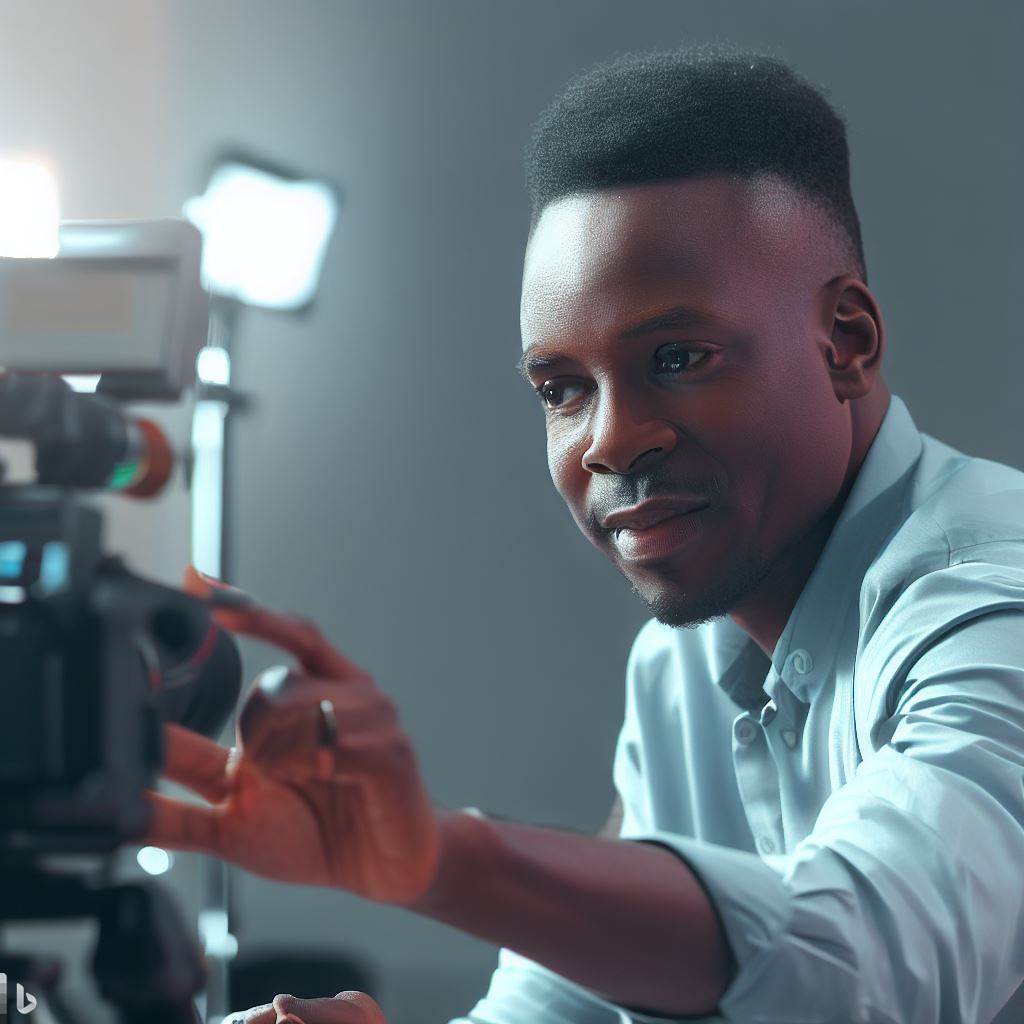
Directing Animation Workflow
In the world of animation, the role of an animation director is crucial during the actual production process.
They play a vital role in overseeing the coordination of various departments and ensuring a smooth workflow.
Let’s dive deeper into their responsibilities and involvement in key decision-making.
Responsibilities During Production
- The animation director is responsible for managing and guiding the entire animation team.
- They collaborate closely with the scriptwriters, storyboard artists, and animators to bring the vision to life.
- Ensuring that the animation style and quality are consistent throughout the production process.
- They provide feedback and make necessary adjustments to ensure the animation aligns with the artistic direction.
- Reviewing and approving the animation drafts, layouts, and final animated scenes before they move forward.
Coordination of Various Departments
The animation director is like the conductor of an orchestra, ensuring that all departments work in harmony.
They oversee the coordination of various departments, including:
- Layout and Background Department: The animation director ensures that the backgrounds and layouts complement the animation style.
- Character Design Department: They ensure that the character designs match the artistic vision and are consistent throughout the production.
- Storyboard Department: The animation director works closely with the storyboard artists to ensure that the story is translated effectively into visuals.
- Sound Department: They collaborate with the sound team to synchronize the animation with sound effects and music.
Involvement in Key Decision-Making
Animation directors have a significant impact on the creative decision-making process. They actively participate in important decisions, such as shot composition, timing, and visual effects.
- Shot Composition: The animation director determines how each shot is framed, ensuring that it enhances the storytelling.
- Timing: They oversee the timing of each animation sequence, ensuring that it creates the desired impact on the audience.
- Visual Effects: The animation director collaborates with the visual effects department to enhance the overall visual experience.
- Character Performance: They work closely with the animators to achieve the desired emotions and movements for each character.
- Storytelling: The animation director ensures that the story is effectively communicated through animation and maintains its overall coherence.
In general, the role of an animation director goes beyond just overseeing the production process.
They are responsible for managing the animation team, coordinating various departments, and making key decisions to enhance the overall quality of the animation.
Their expertise and artistic vision contribute significantly to the success of an animated project.
Quality Control and Editing
As an animation director, one of the key responsibilities is to maintain quality standards throughout the entire project.
This involves overseeing various aspects of the animation process, including reviewing and providing feedback on animation sequences, as well as ensuring the final product meets the vision of the project.
Role in Reviewing and Providing Feedback
An important part of the animation director’s role is to review and provide feedback on animation sequences.
This is crucial to ensure that the animations are of high quality and align with the overall vision of the project.
They closely examine each sequence, analyzing the movements, character expressions, timing, and overall coherence.
By doing so, they can identify any areas that need improvement or adjustments to enhance the final output.
Feedback is then provided to the animators, guiding them towards achieving the desired outcome.
Role in Editing and Post-Production Processes
The animation director also plays a significant role in the editing and post-production processes. This involves working closely with the editor to refine and polish the animation sequences.
By carefully selecting and arranging the shots, they ensure a cohesive narrative flow.
Additionally, the animation director collaborates with the sound designers and composers to enhance the visual experience with appropriate sound effects and music.
They synchronize the audio with the animation, making sure that the overall audio-visual presentation is seamless and effective.
Ensuring the Final Product Matches the Vision
Ultimately, the animation director is responsible for ensuring that the final product meets the vision of the project.
They work closely with the creative team, including the art director and the producers, to ensure that all elements align with the intended style, tone, and message of the animation.
This involves maintaining consistency in the visual style, colors, and overall design throughout the animation.
The animation director may provide guidance on specific details, such as character design, background art, and special effects, to ensure they are in line with the project’s vision.
Quality Control and Time Management
In addition to maintaining quality standards, the animation director also plays a vital role in managing the project’s timeline and resources efficiently.
They oversee the scheduling and allocation of tasks, ensuring that everything progresses smoothly and adheres to the project’s deadlines.
Furthermore, the animation director constantly evaluates the work in progress, identifying any potential issues or bottlenecks.
Publish Your Professional Profile, Business or Brand
Showcase your expertise, gain trust, and boost visibility instantly on Professions.ng.
Publish NowBy proactively addressing these challenges, they can prevent delays and ensure that the final product is delivered on time.
The animation director’s role in maintaining quality standards throughout the project is crucial to achieve the desired outcome.
Through their involvement in reviewing and providing feedback on animation sequences, as well as overseeing the editing and post-production processes, they ensure that the final product matches the vision of the project.
By effectively managing time and resources, they play an essential part in delivering high-quality animations within the given timeline.
Explore Further: How Performers’ Agents Shape Nigeria’s Music Scene
Challenges and Rewards
In the world of animation, being an animation director can be both challenging and rewarding. Let’s explore the challenges and rewards that come with this role.
Challenges Faced by Animation Directors
Managing Time and Meeting Tight Deadlines
One of the biggest challenges for animation directors is the pressure to meet tight deadlines.
Animation projects often have strict production schedules, and directors must ensure that their teams stay on track to deliver the final product on time.
Coordinating with Large Teams
Animation directors typically work with large teams of artists, animators, and technicians.
Coordinating the efforts of all these individuals can be a logistical challenge, as directors need to ensure that everyone is working together towards a common vision.
Maintaining Consistency and Quality
Consistency and quality are vital in animation. Directors must ensure that the animation style, character designs, and storytelling remain consistent throughout the project.
They also need to maintain high-quality standards in terms of animation technique, visual effects, and overall production value.
Dealing with Technical Issues
Animation involves using complex software and sophisticated tools. Animation directors must navigate through technical challenges, such as software glitches, rendering issues, or compatibility problems.
They need to have a strong technical understanding to troubleshoot these problems effectively.
Handling Creative Differences
An animation project often involves collaboration between different creative minds. Directors may encounter disagreements or conflicts regarding artistic choices, storytelling, or character development.
Managing these creative differences and finding a balance between different perspectives can be a challenge.
Rewards of Being an Animation Director
Turning Creative Vision into Reality
One of the most rewarding aspects of being an animation director is seeing your creative vision come to life on the screen.
From developing the initial concept to leading the team through production, directors get to see their ideas take shape and become a reality.
Working with Talented Artists
Animation directors have the privilege of collaborating with incredibly talented artists and animators.
They get to work alongside individuals who bring their unique skills and creativity to the project, resulting in a rich and visually stunning final product.
Pushing the Boundaries of Animation
Animation directors are at the forefront of pushing the boundaries of what animation can achieve.
They have the opportunity to experiment with new techniques, embrace technological advancements, and explore innovative storytelling methods.
Creating Lasting Impact on Audiences
Animation has the power to captivate and inspire audiences of all ages.
As an animation director, you have the ability to create stories that resonate with people, evoke emotions, and leave a lasting impact on viewers, making a difference through your art.
Building a Legacy
Many animation directors leave a lasting legacy through their work.
Their films and TV shows become timeless classics, influencing future generations of animators and directors, and contributing to the rich history of animation as an art form.
Basically, the role of an animation director comes with its fair share of challenges, from managing time and teams to maintaining quality and handling creative differences.
However, the rewards of seeing your creative vision come to life, collaborating with talented artists, pushing the boundaries of animation, impacting audiences, and building a lasting legacy make it an incredibly fulfilling profession.
Conclusion
The role of animation directors is crucial in the success of animated films and series. They are responsible for bringing characters to life and ensuring the overall vision of the project is achieved.
Throughout this blog post, we have discussed the various responsibilities and creative tasks that animation directors undertake.
From storyboarding to collaborating with animators and artists, their role is multi-faceted and demands expertise in various aspects of animation production.
Animation directors play a key role in the storytelling process, making sure that the emotions and narratives are portrayed effectively.
They oversee the animation team and ensure that the artwork and animation are consistent and in line with the vision.
The behind-the-scenes work done by animation directors often goes unnoticed by the audience, yet it is essential to the final product.
They pour in countless hours, creativity, and attention to detail to make animated films and series visually stunning and captivating.
It is important for viewers to appreciate the efforts of animation directors and acknowledge how their work contributes to the success of animated projects.
By understanding the intricacies and complexity of their role, audiences can gain a deeper appreciation for the artistry and craftsmanship that goes into every animated film or series.
So, the next time you watch an animated film or series, take a moment to appreciate the immense talent and hard work of the animation directors behind the scenes, who bring the magic to life.

